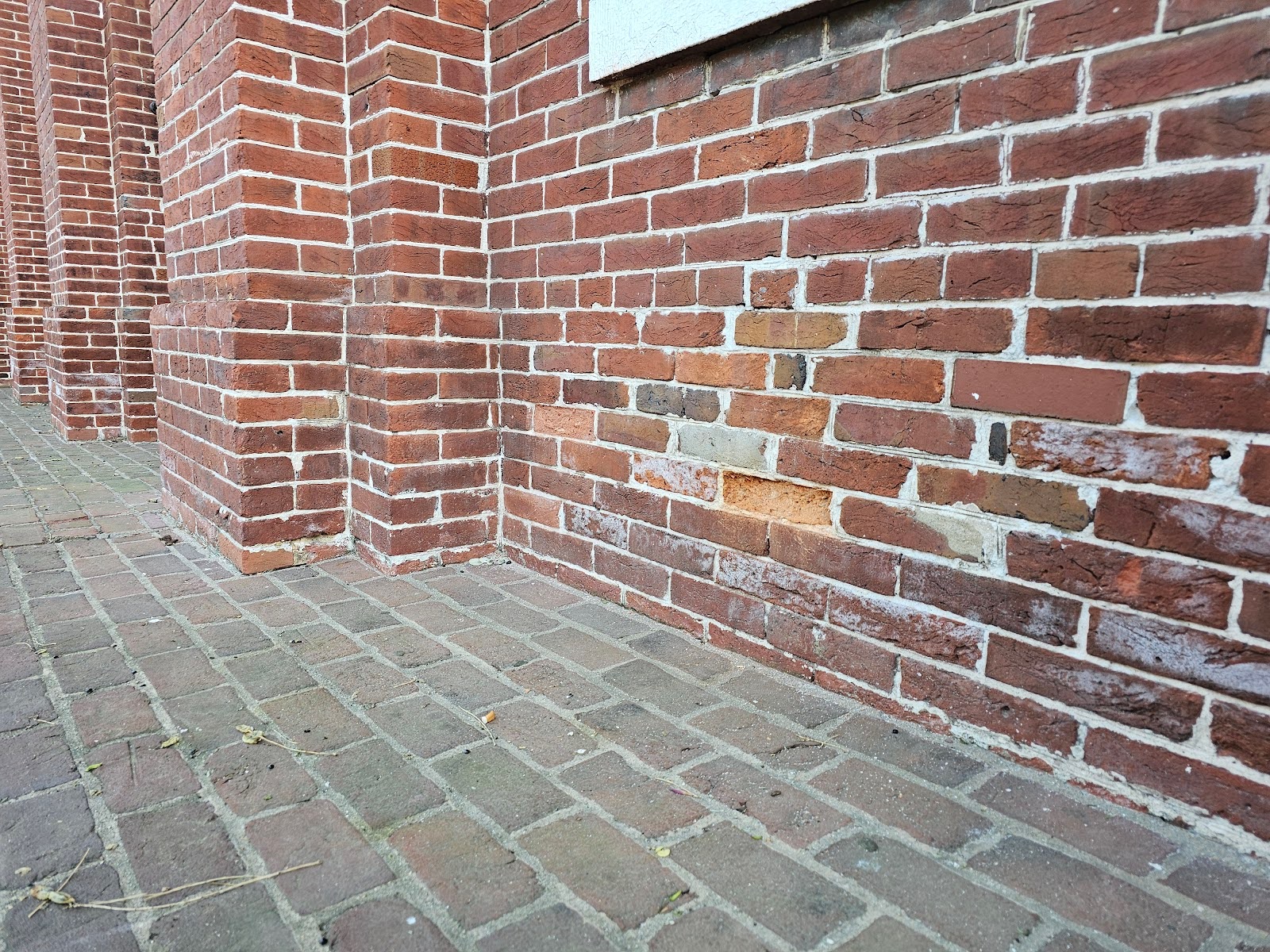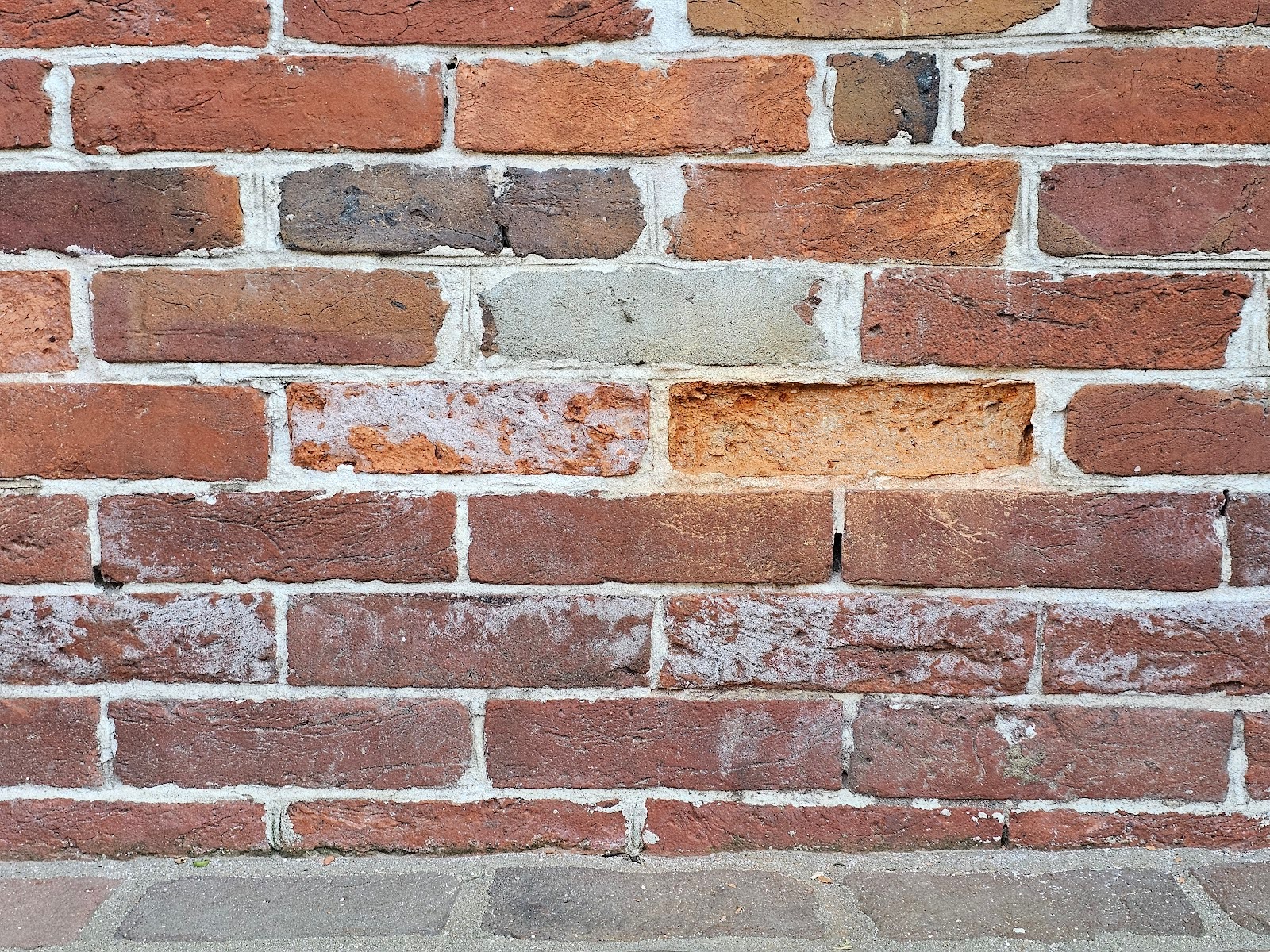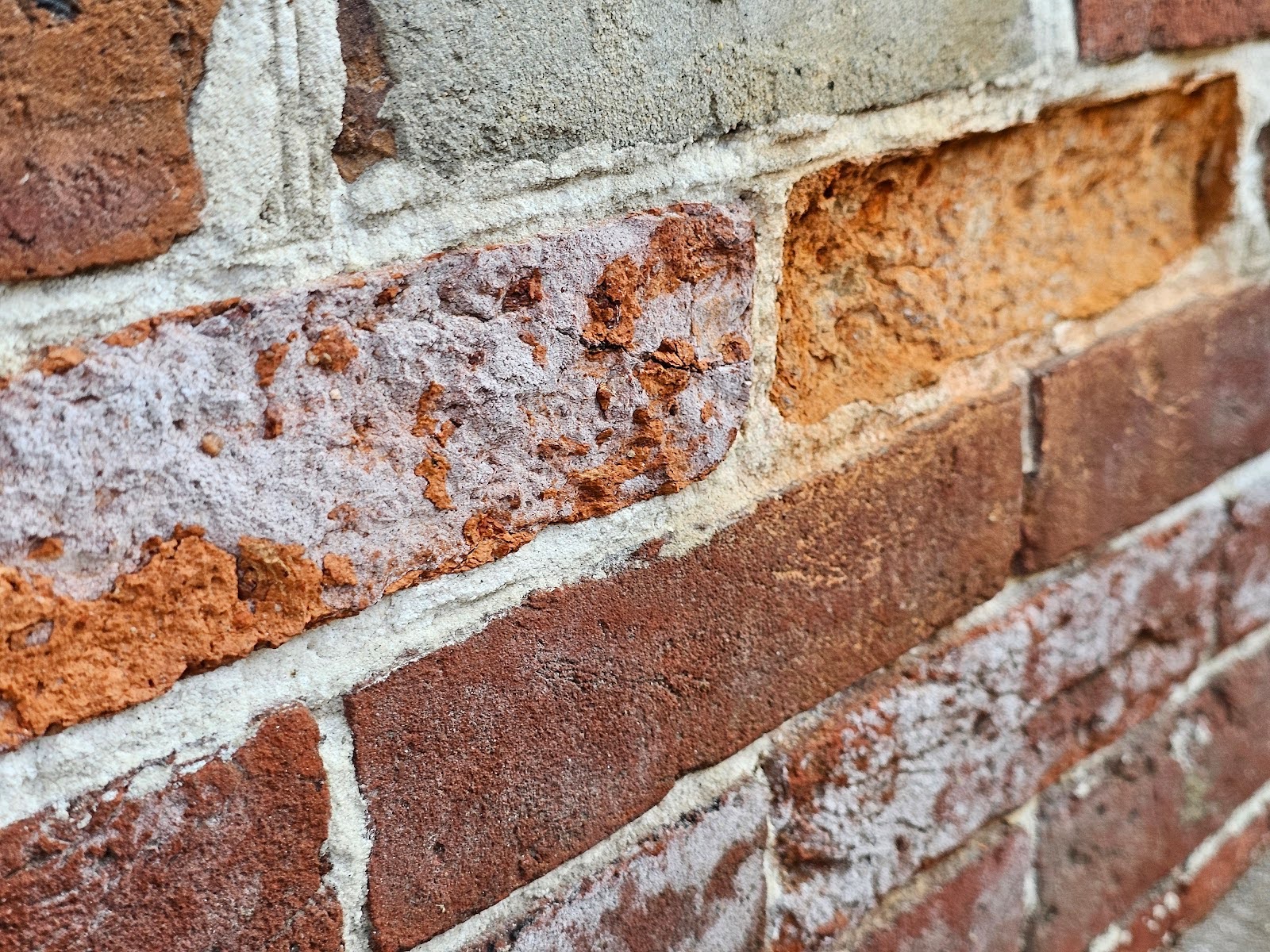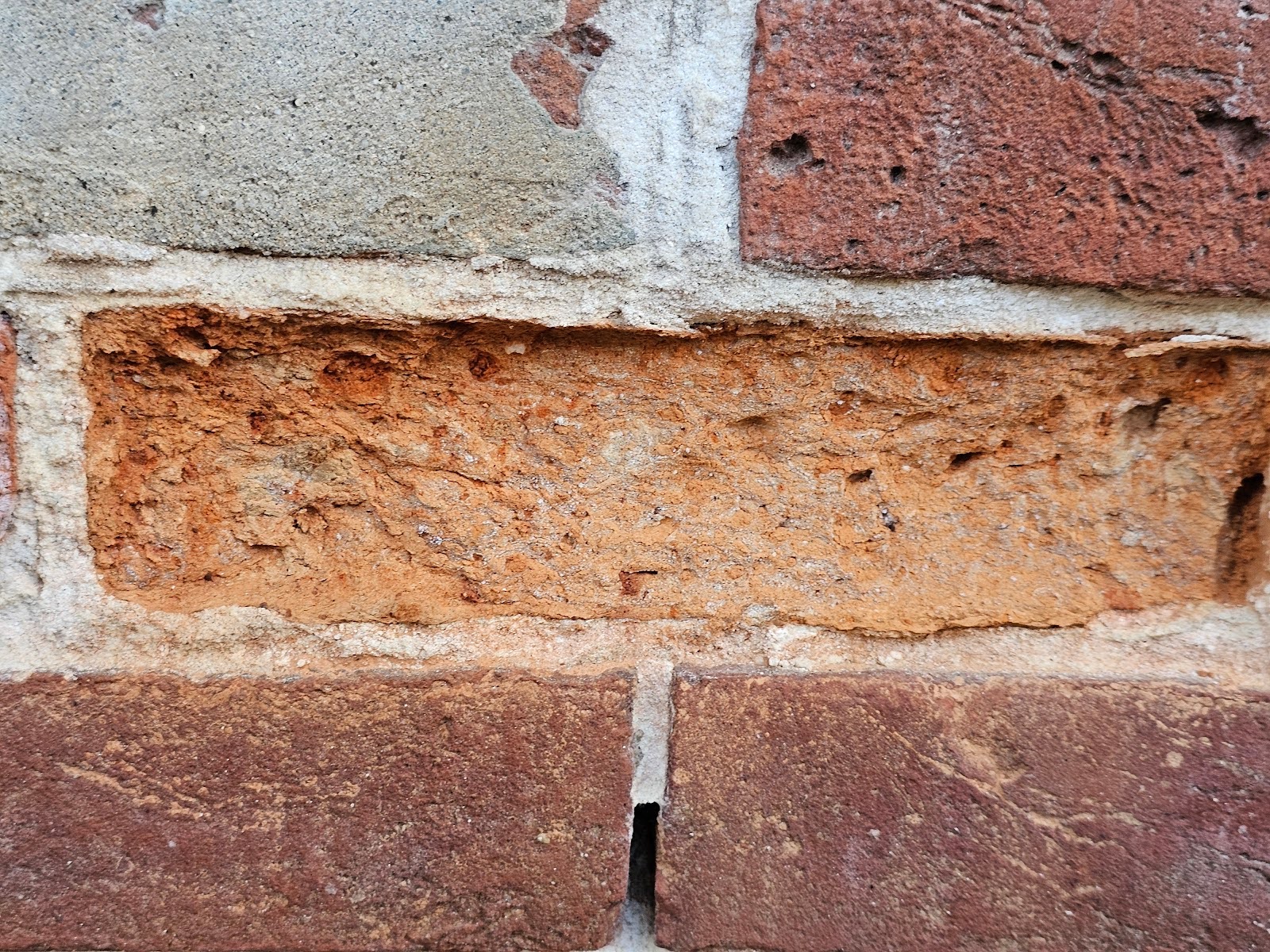How rising damp causes wall damage
Here on our blog and our website, we’ve looked at many different examples of the different types of deterioration of elements of construction, with particular focus on historic masonry and historic brickwork. Many of these problems can be solved by repointing and or tuckpointing, but repointing and historic masonry restoration, in general, is a complicated topic.
Many people are confused by the different types of restoration and the requirements of historic masonry revitalization. In general, some of the key elements include understanding the causation of mortar deterioration and safeguarding masonry from some of the key elements that cause accelerated deterioration. Repointing doesn’t need to be extremely complicated but the vast majority of contractors here in Washington DC, focused on working in historic construction and historic buildings, happen to not understand the simple principles of historic masonry restoration.
For our company, it’s not just a specialization in an area of focus, but also a calling that we take seriously, something that’s important to us. Today, we’re going to look at a few particular examples of accelerated deterioration in historic masonry just like the majority of brickwork found here in Washington DC. The picture below shows the base of a historic brick wall with a masonry paving or terrace walkway area adjacent to the historic brick wall.

This wall is built with historic brick which is a low temperature fired brick. Almost all brick that was made about roughly over 100 years ago was fired at lower temperatures than modern brick and therefore is a bit softer. In technical terms, we could explain the softer quality or characteristic of these bricks by describing the compressive strength and permeability. In simple terms, These bricks have a compressive resistance strength that’s about roughly 1/3 of typical contemporary bricks.

Contemporary bricks are fired through mechanized systems that provide significantly higher levels of consistency and higher temperatures of fuel source burning which creates a brick that’s stronger in terms of compressive strength and has much lower permeability.

As you can see in the pictures above and below, particularly where we’re pointed with the wrong type of incorrect modern mortar, historic bricks will often be damaged by a reaction referred to as spalling. Spalling is the process of the cracking and breaking of the face of a brick when the brick has natural micro movements that cause pressure against the face of the brick in excess of what the brick can tolerate. In those cases, the face of the brick may crack or begin to crumble and in some cases will crack at a cleavage point that will cause the face to shear off of the remainder of the brick.
If you look closely at the picture below, you can see that the brick at the top left-hand corner of the picture has a thin coating on top of the brick face. This may be a very thin application of cementitious parging or a type of paint, but in any case it looks like this brick has been replaced with a historic brick from a different location or site.
Above, we described the characteristics of compressive strength resistance, but moisture infiltration is also an important potential condition of destabilization which can lead to deterioration and fracture at the face of a brick, particularly where the bricks have been repointed with incorrect mortar. Proper historic masonry restoration requires a mortar that is compatible to the brick substrate. Rising damp is a natural process which includes wicking or absorption of ground moisture into the brickwork and vertically upwards into portions of the wall where the wall extends even above grade. This coming week we’ll look at several different examples and contributing factors of rising damp.

Our company, Dupont Tuckpointing and Masonry, specializes in masonry restoration, historic brick repointing, and tuckpointing services in the Washington D.C. area. These buildings are uniquely historic, and their preservation requires skilled masons who are technically trained in the best practices and knowledge of proper restoration techniques.
We understand the significance of maintaining the architectural integrity of these historic structures, and our team of experienced professionals is dedicated to delivering exceptional craftsmanship. Whether you require masonry restoration, tuckpointing, or brick repointing services, we are here to help.
At Dupont Tuckpointing and Masonry, we take pride in our work and strive to ensure that every project is executed with the utmost care and attention to detail. We are committed to preserving the rich heritage of Washington D.C.’s built environment for generations to come.
If you have any questions or needs regarding masonry restoration, historic brick repointing, or tuckpointing services, please do not hesitate to reach out to us. We would be delighted to assist you and provide you with the expertise and quality workmanship that your historic property deserves.
You can reach us by telephone at (202) 796-7644 and you can reach us by email from the contact form on our website at https://duponttuckpointingmasonrydc.com/contact-us/.




